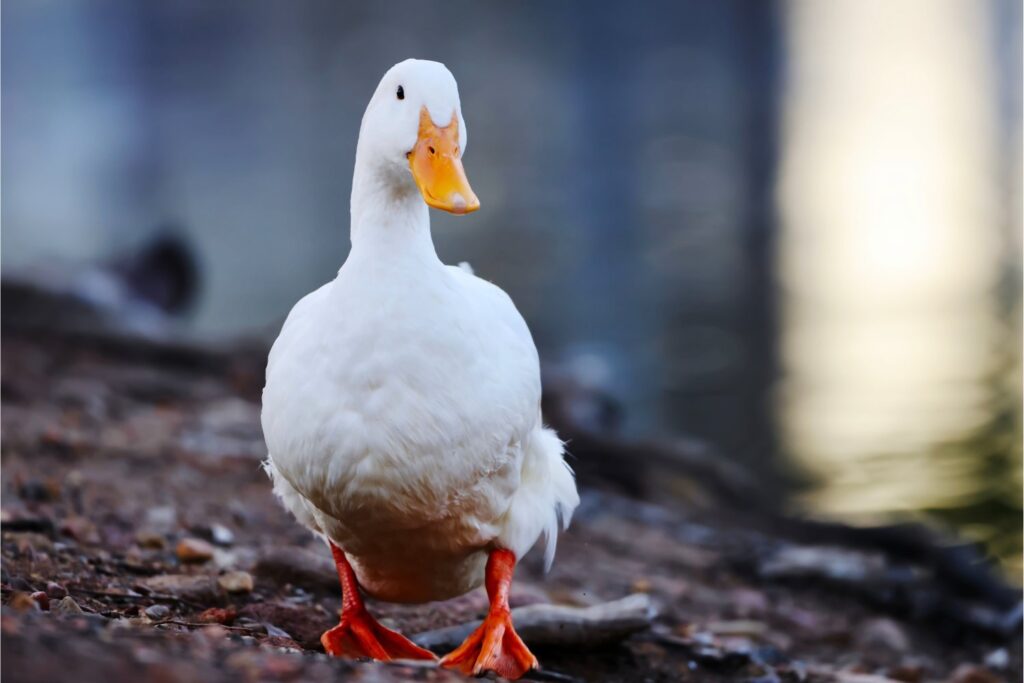It looks like H5N1 isn’t the only kind of bird flu that Americans should be worried about. Federal officials have just reported finding highly pathogenic H5N9 avian influenza among ducks at a commercial meat farm in California.
The U.S. Department of Agriculture (USDA) notified the World Organization for Animal Health (WOAH) about the detection of H5N9 this past weekend, though the outbreak itself dates back to last November. Worryingly, both H5N9 and H5N1 were found on the farm, located in Merced County. These are the first reported cases of H5N9 ever found in U.S. poultry.
H5N1 bird flu has become a serious public health concern in the past few years, thanks to continued outbreaks in wild birds and poultry, as well as the more recent emergence of H5N1 in dairy cows starting early last year. More than 60 human cases of H5N1 in the U.S. have been documented since 2024, most linked to contact with infected cows or poultry. Most of these human cases have been mild and the risk of bird flu to the general public is still considered low, though there was a recent death tied H5N1 in Louisiana reported earlier this month.
As this recent duck outbreak shows, however, H5N1 isn’t the only variant of the highly pathogenic influenza A virus circulating in the world (highly pathogenic refers to the virus’s potential to cause severe disease in birds specifically). According to the WOAH report filed by the USDA, the outbreak was detected in late November, following increased duck deaths at the farm. Tests of the sickened birds conducted by the USDA’s National Veterinary Services Laboratory initially detected an unknown type of H5 influenza. Later genetic testing, completed by mid-January, identified cases of H5N9 and H5N1 influenza. Both strains appear to belong to the same broad clade of highly pathogenic avian influenza viruses, called 2.3.4.4b.
“This is the first confirmed case of HPAI H5N9 in poultry in the United States,” the WOAH report said.
According to the report, state officials quarantined the farm following the detection of the outbreak. In early December, a culling of the farm’s nearly 120,000 birds was performed. Officials with the USDA’s Animal and Plant Health Inspection Service (APHIS), along with state animal health and wildlife officials, are reportedly conducting “comprehensive epidemiological investigations and enhanced surveillance” of the affected area.
The larger implications of this outbreak are unclear at this point. One reason why influenza is dangerous is that different variants can sometimes infect the same host and mix together, producing a new strain with unpredictable properties, including changes that could make it more adaptable to human transmission. It’s possible this variant of H5N9 emerged from H5N1 mingling with other N9-carrying types of influenza (which wouldn’t be the first time such a reassortment event has happened). The outbreak is also noteworthy because ducks are a concerning host for avian influenza, since they often don’t show signs of illness; that in turn could make them more proficient vectors of infection to other birds and animals. At the same time, this outbreak may be an isolated incident, as no additional cases of H5N9 have been detected elsewhere.
While the USDA is still talking to the WOAH, the Trump administration has ordered all of its federal health agencies to cease most external communication for the time being. Neither the USDA nor APHIS appear to have provided a public update on the outbreak. Gizmodo has reached out to APHIS for comment but did not hear back by the time of publication.







